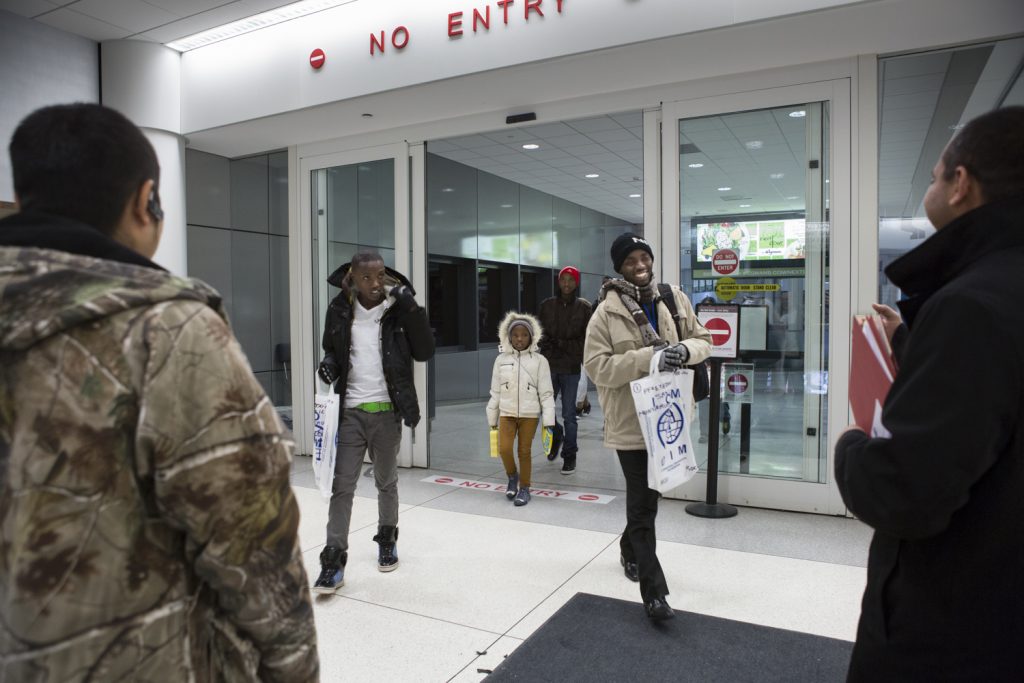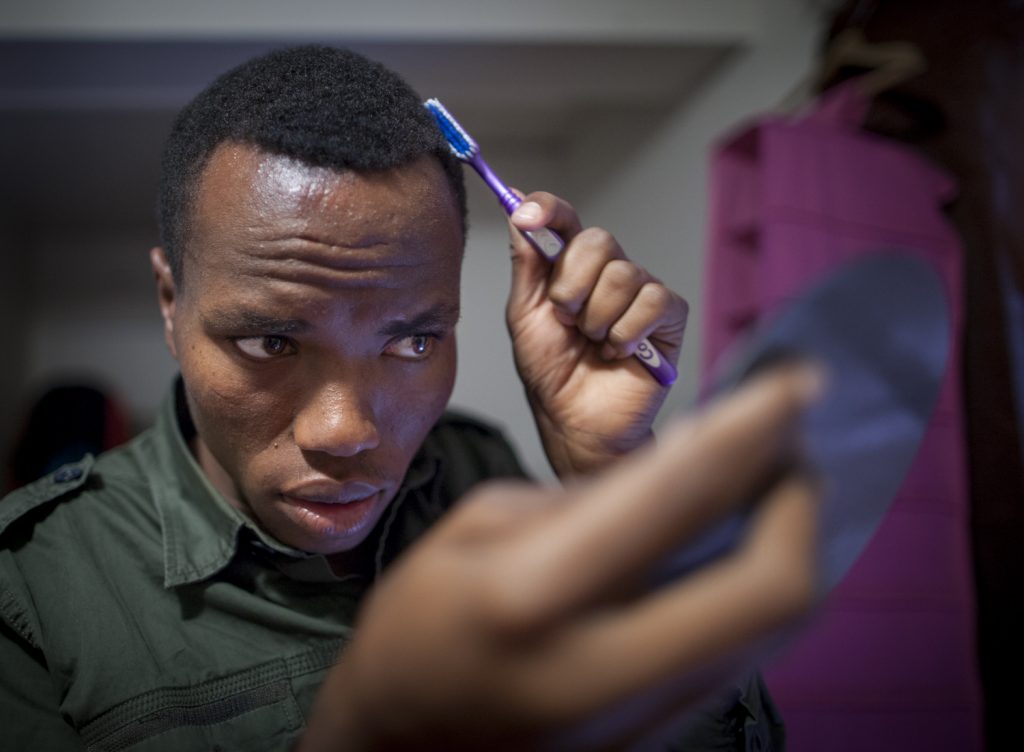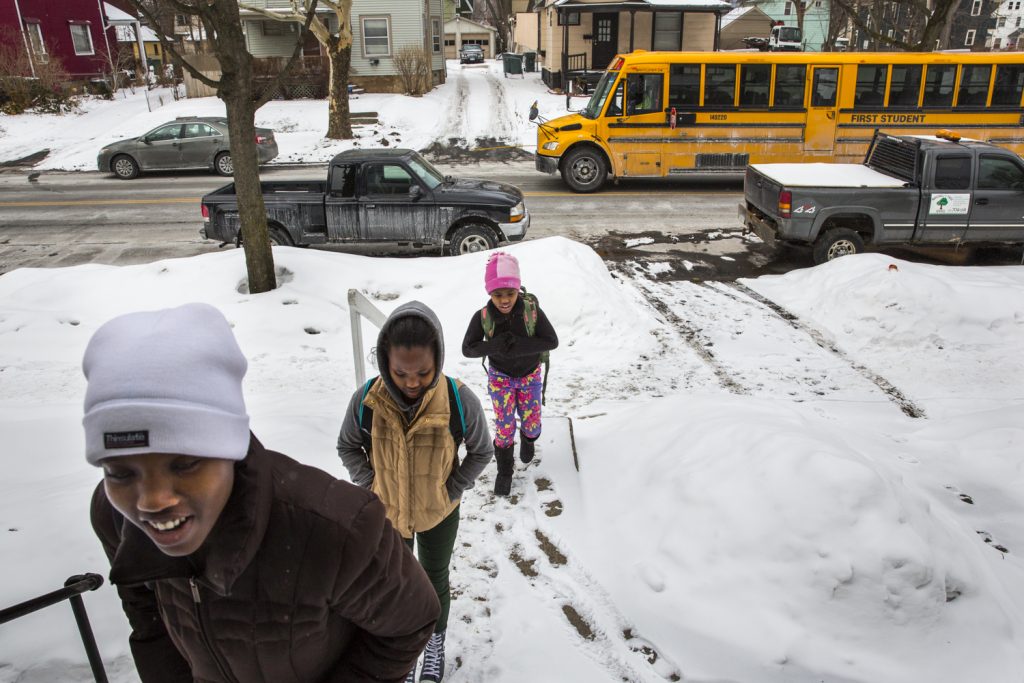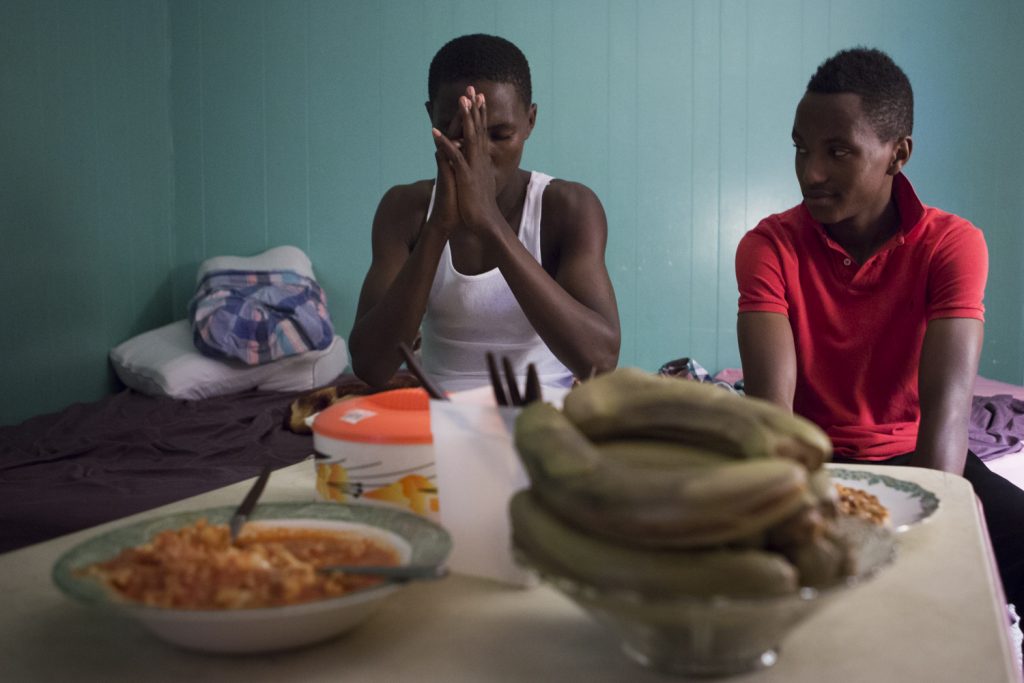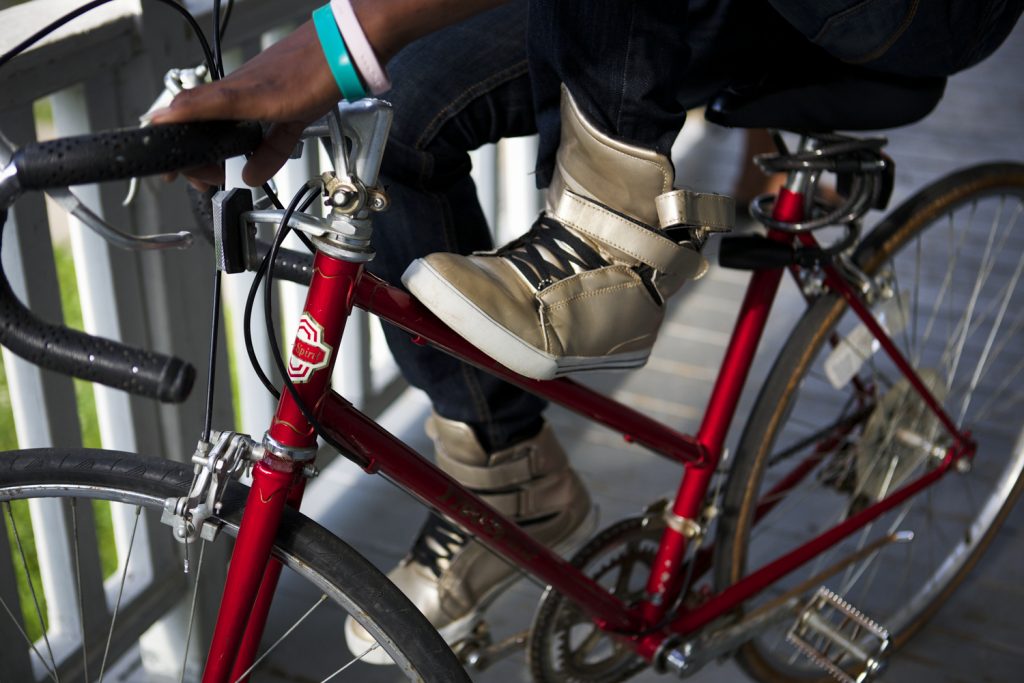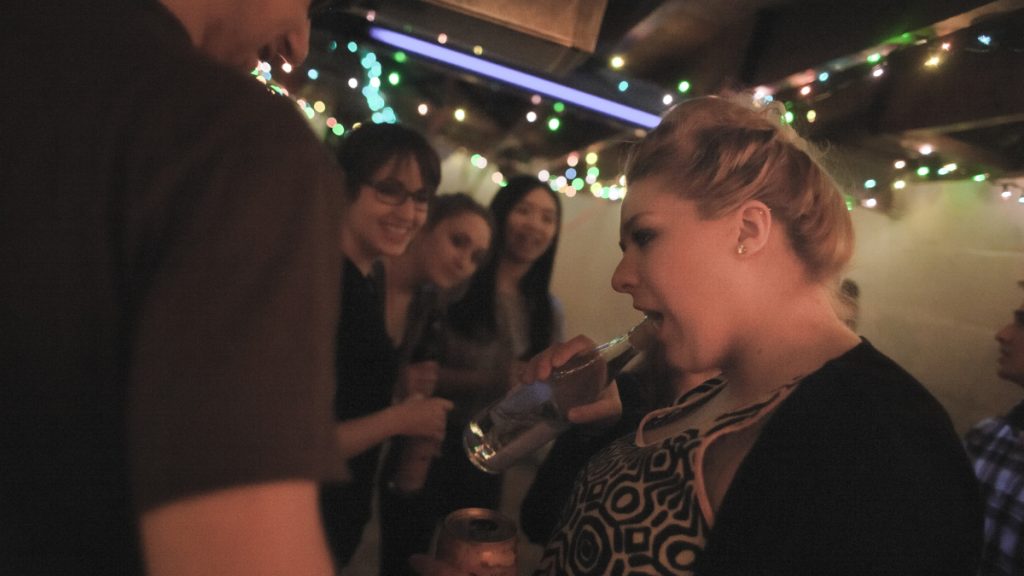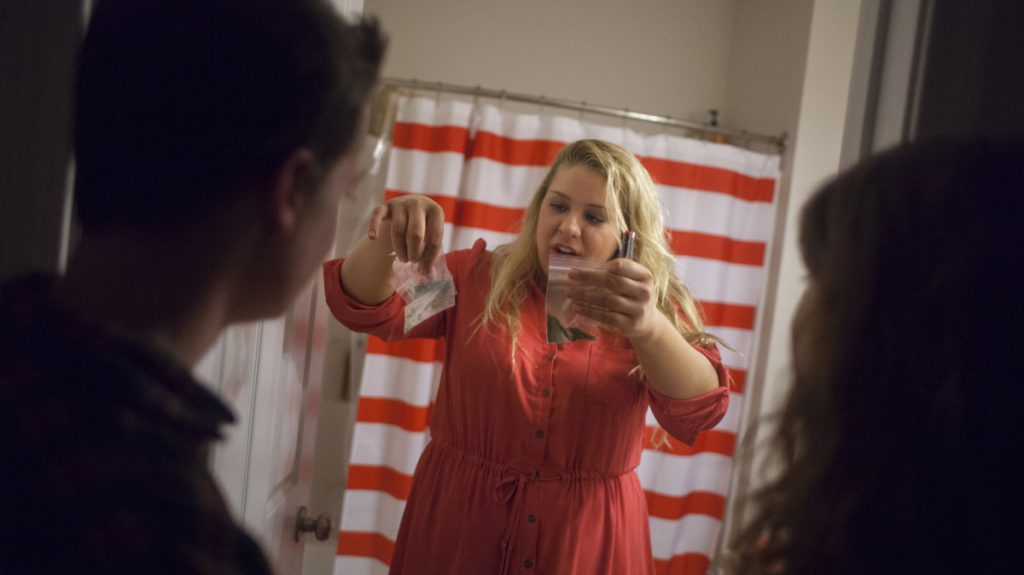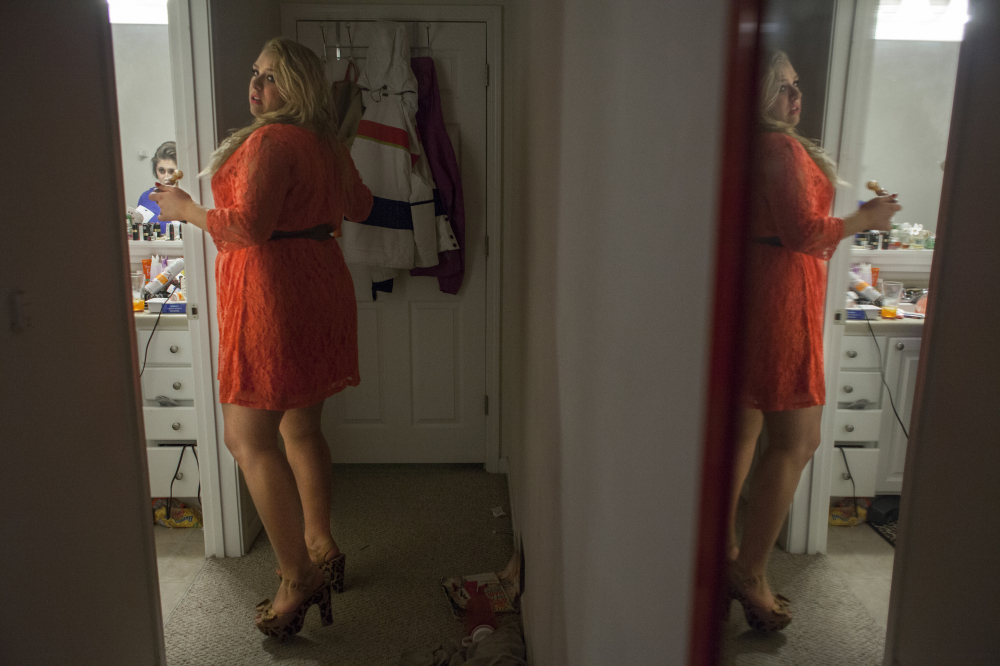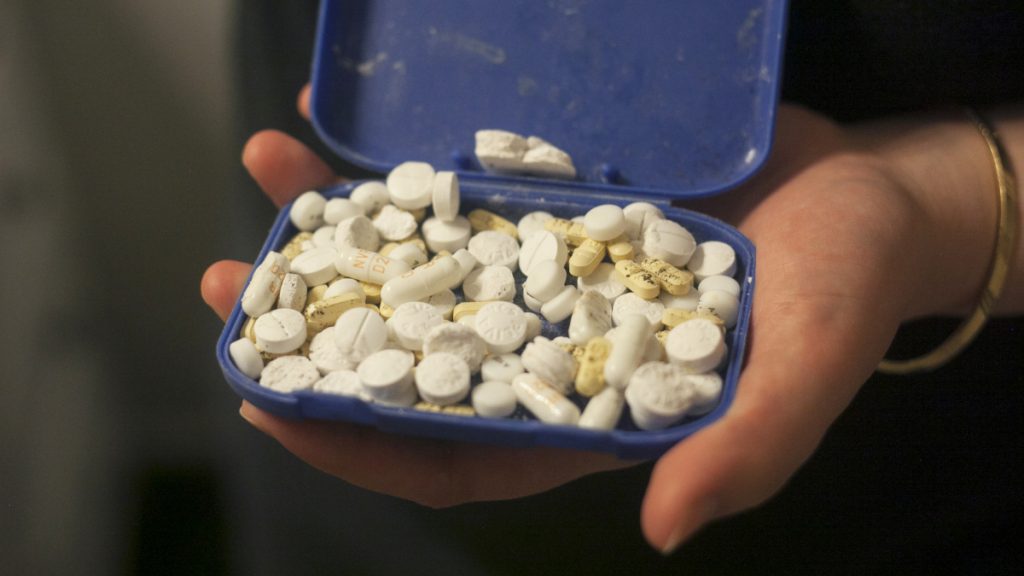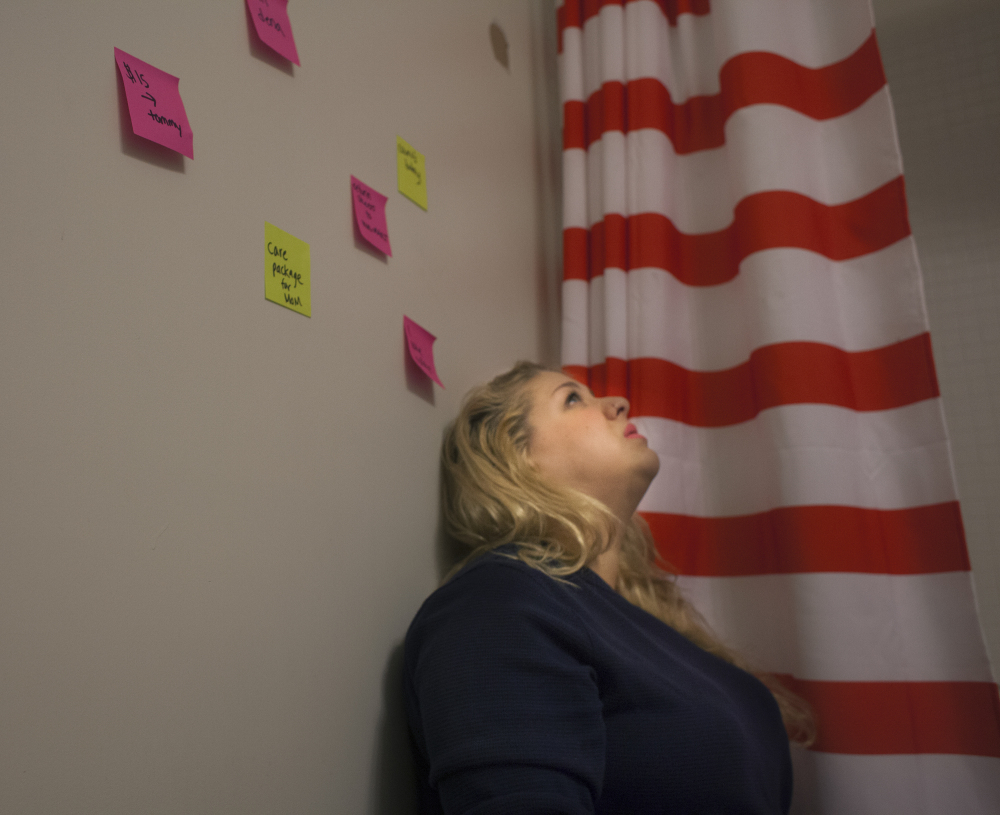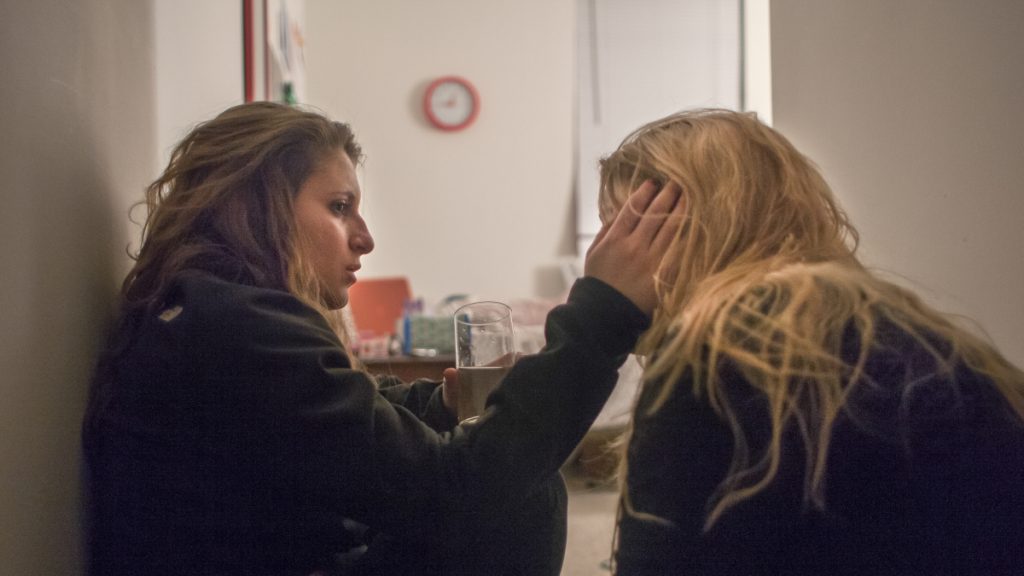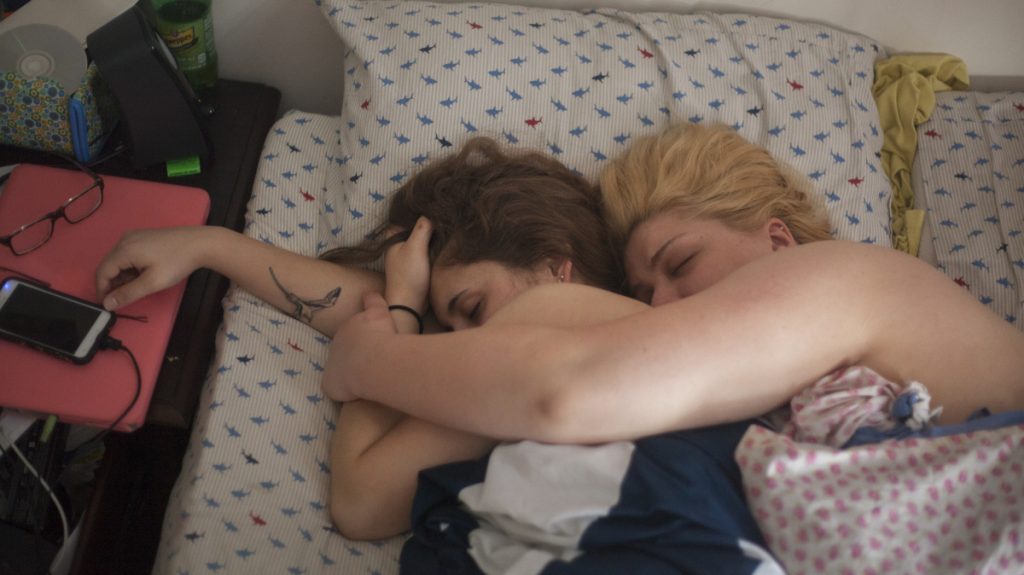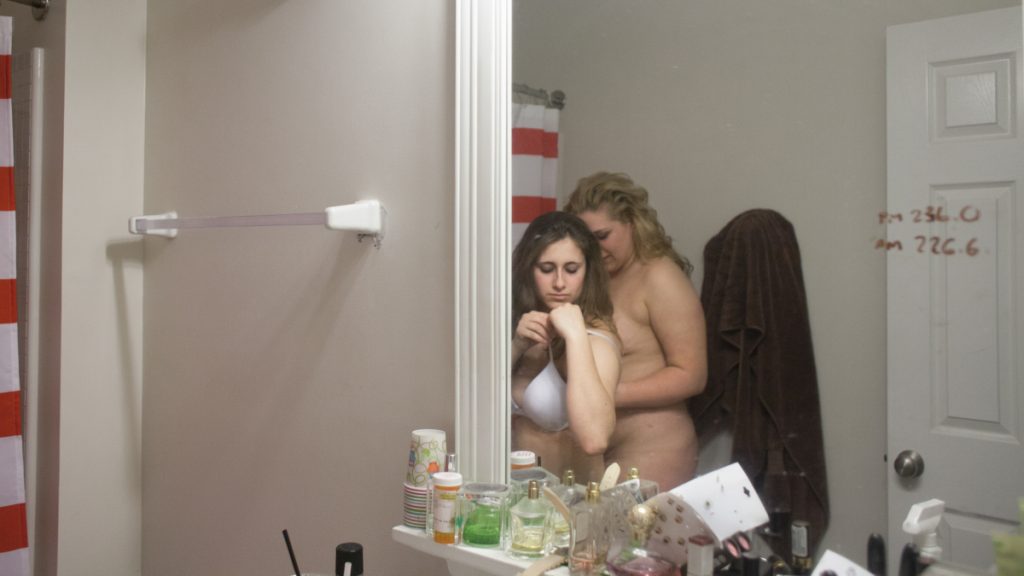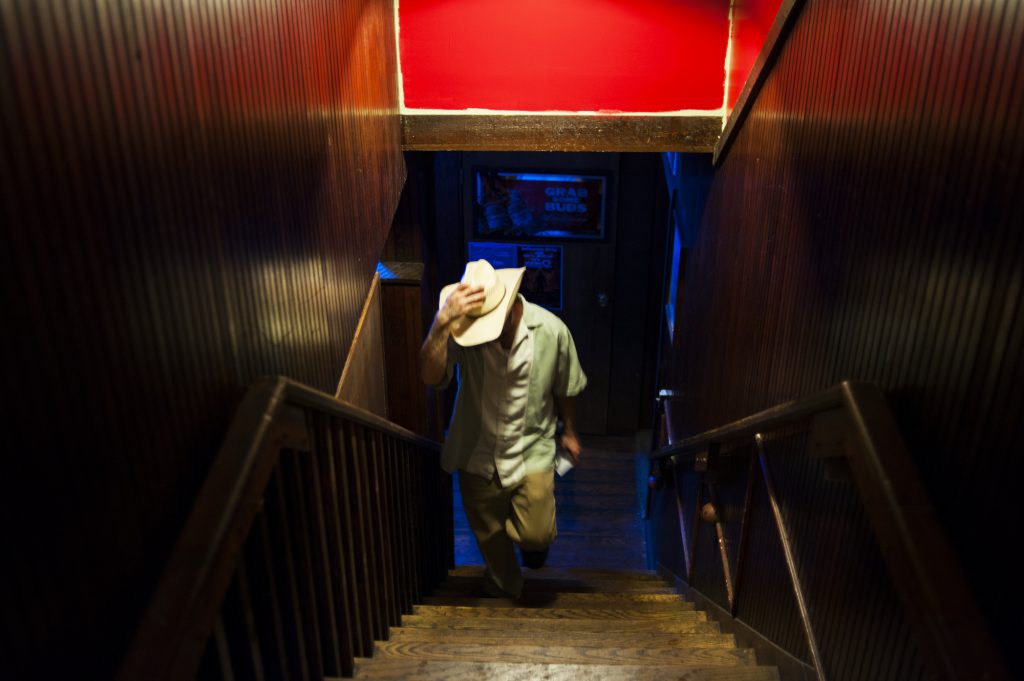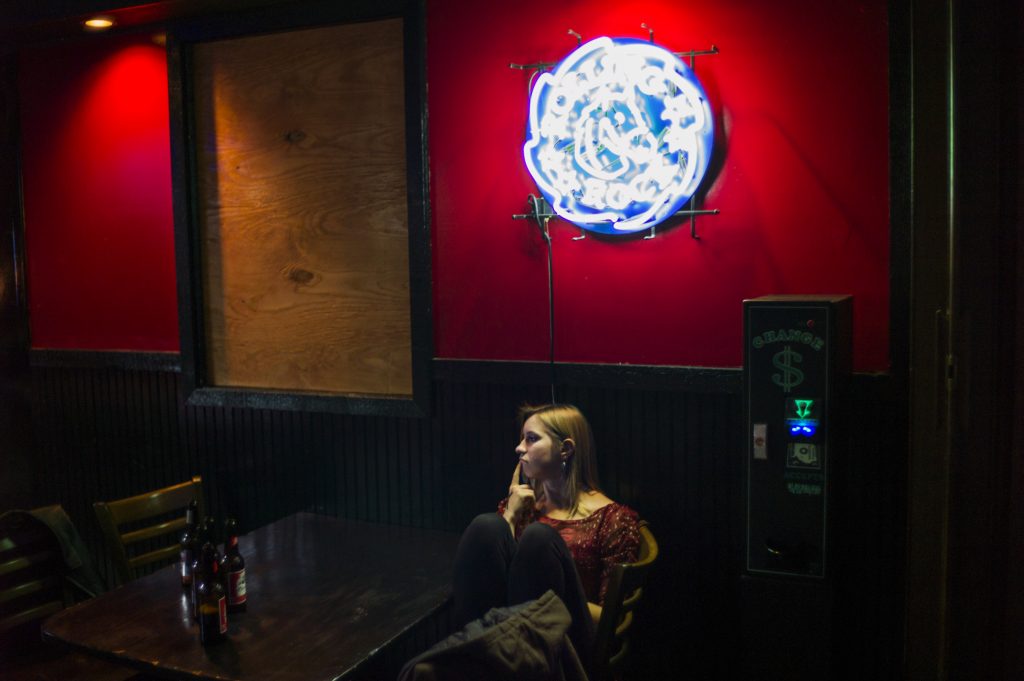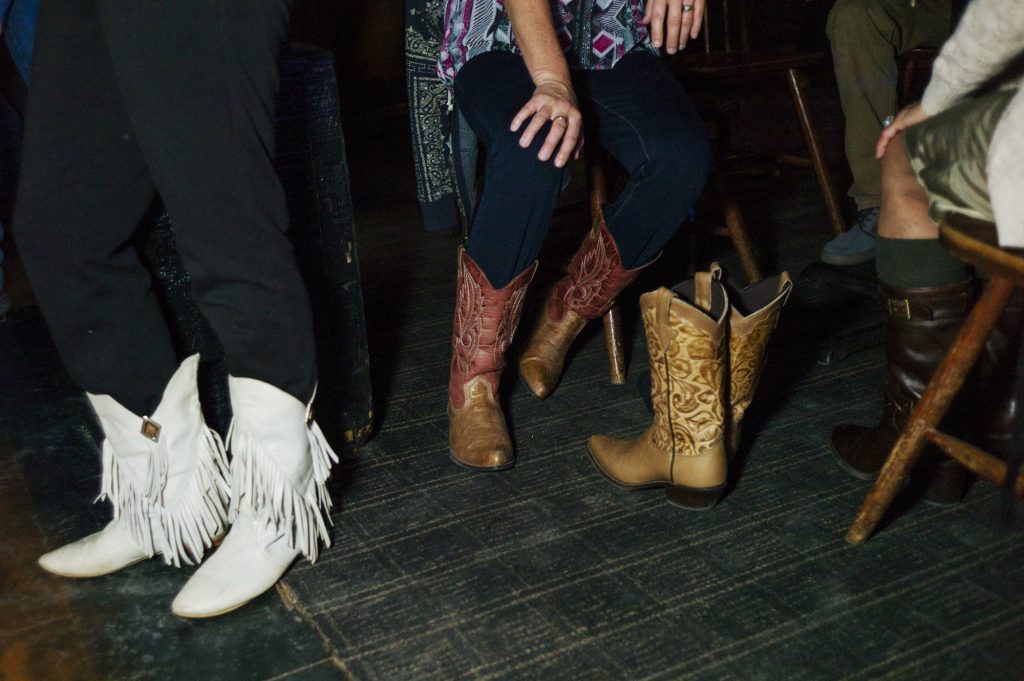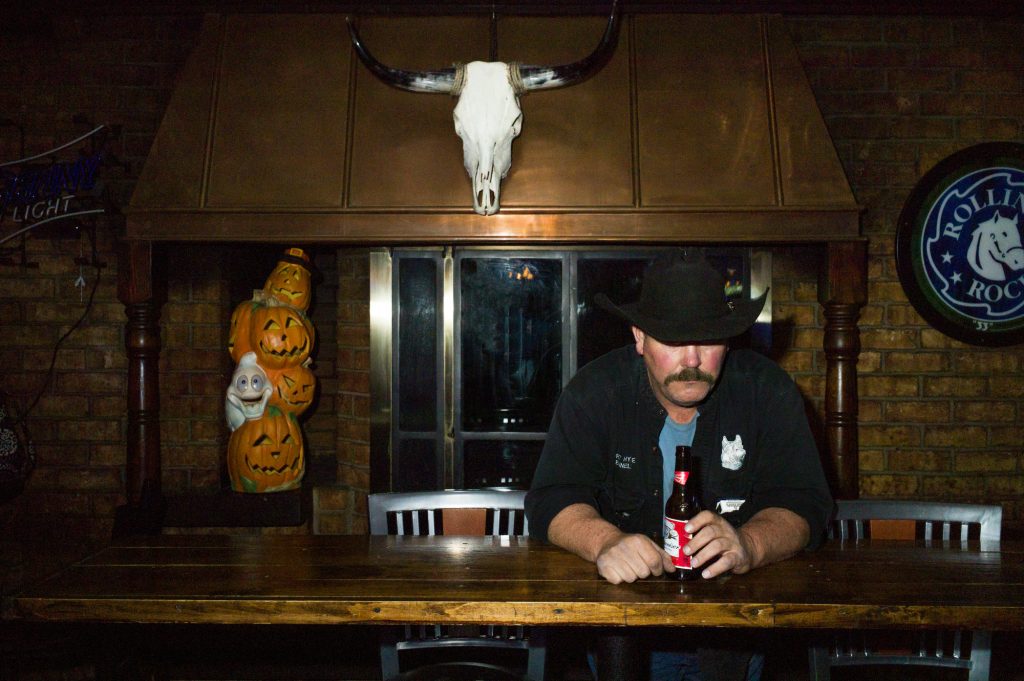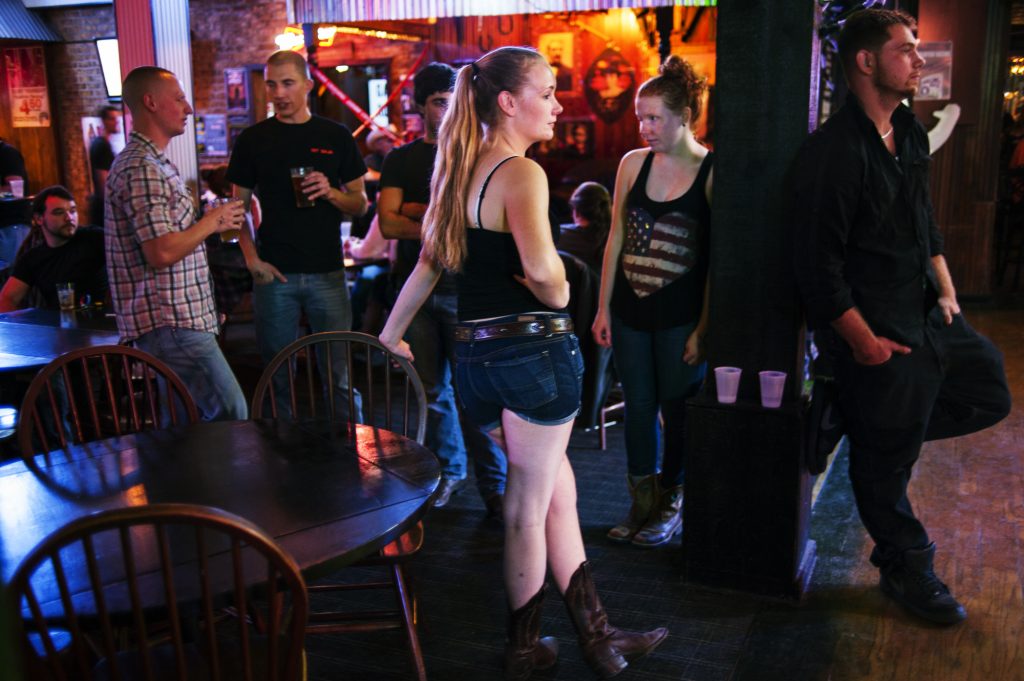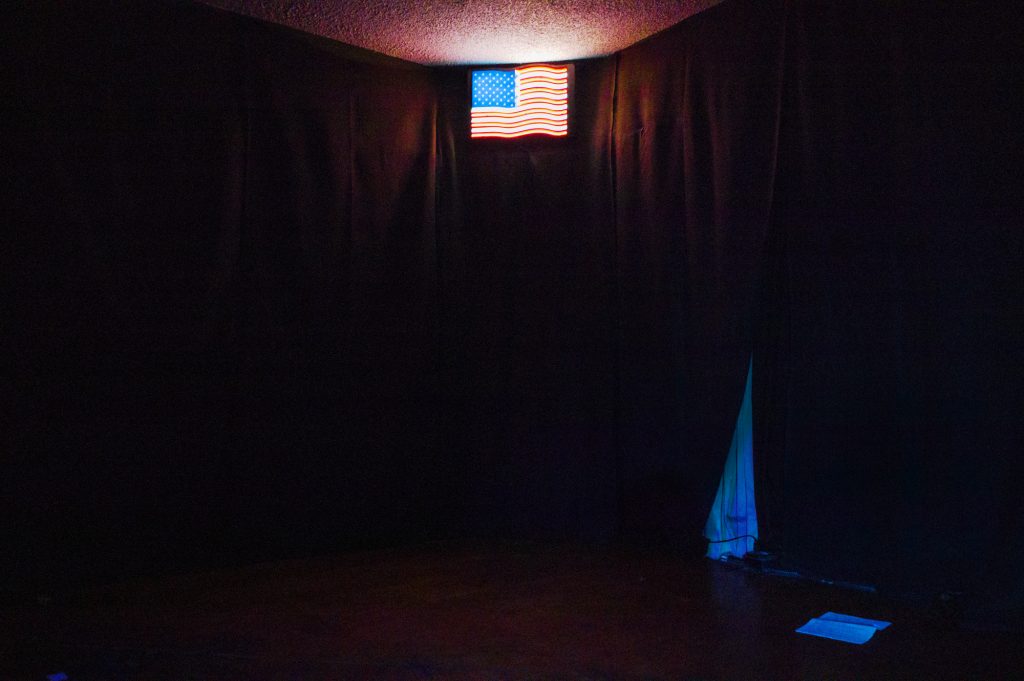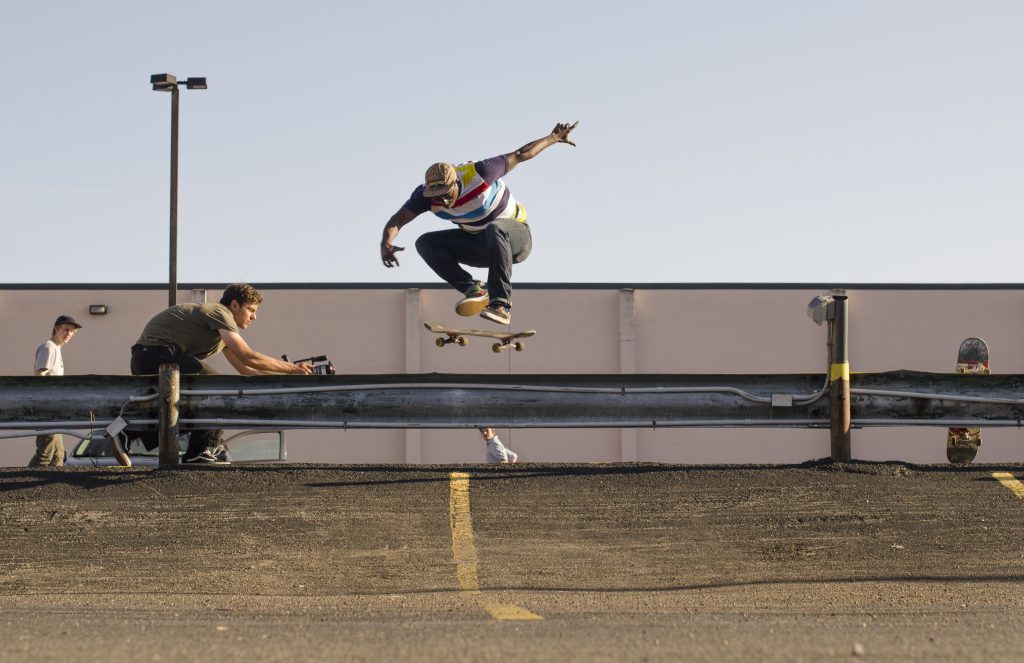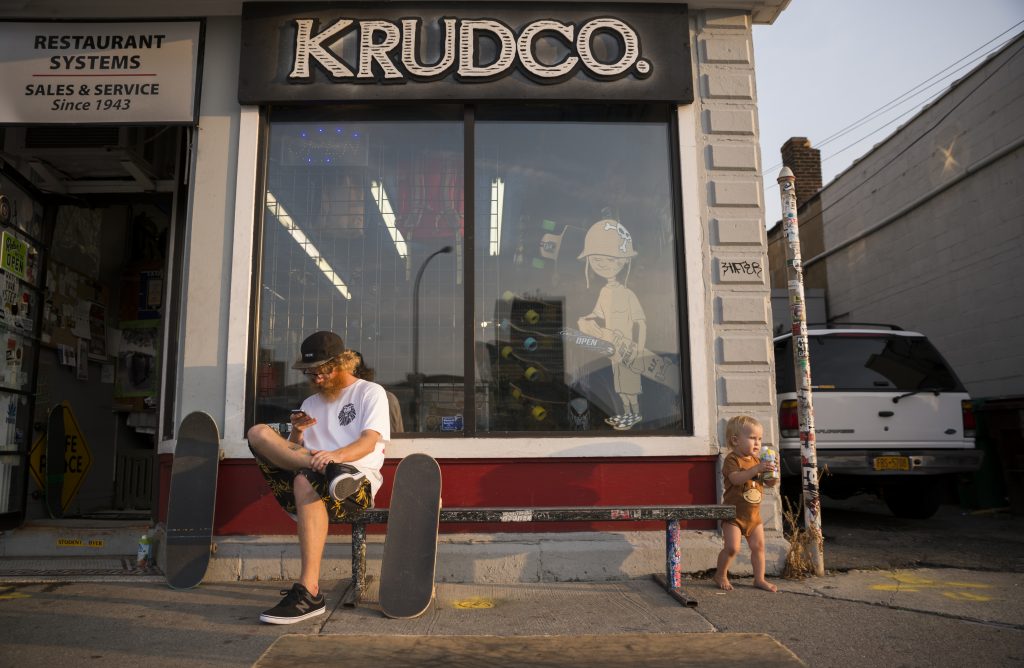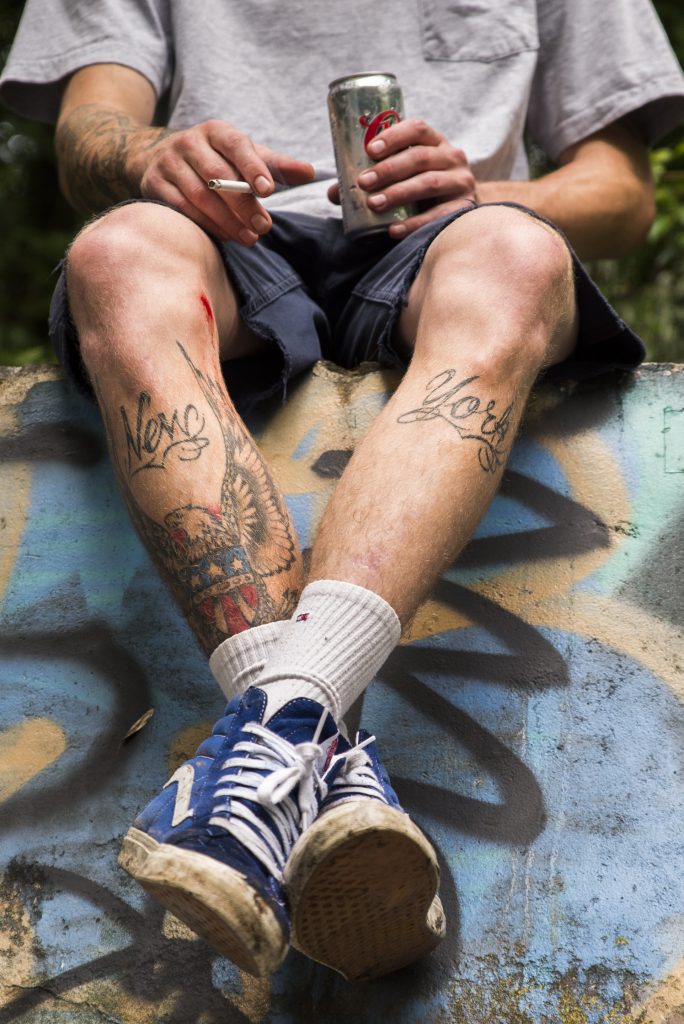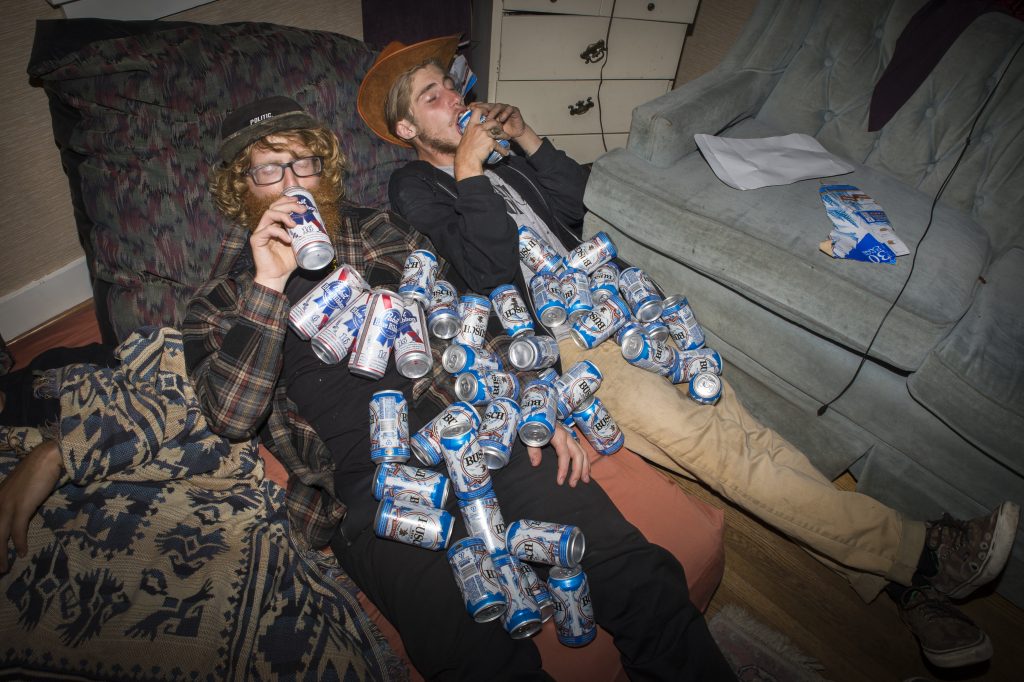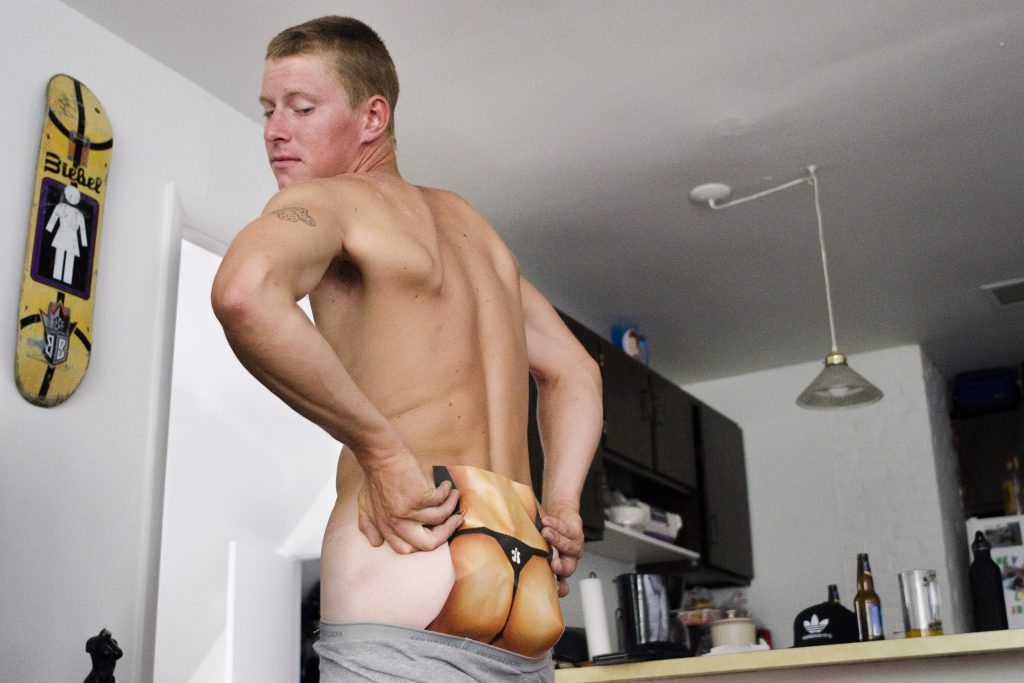New Roots
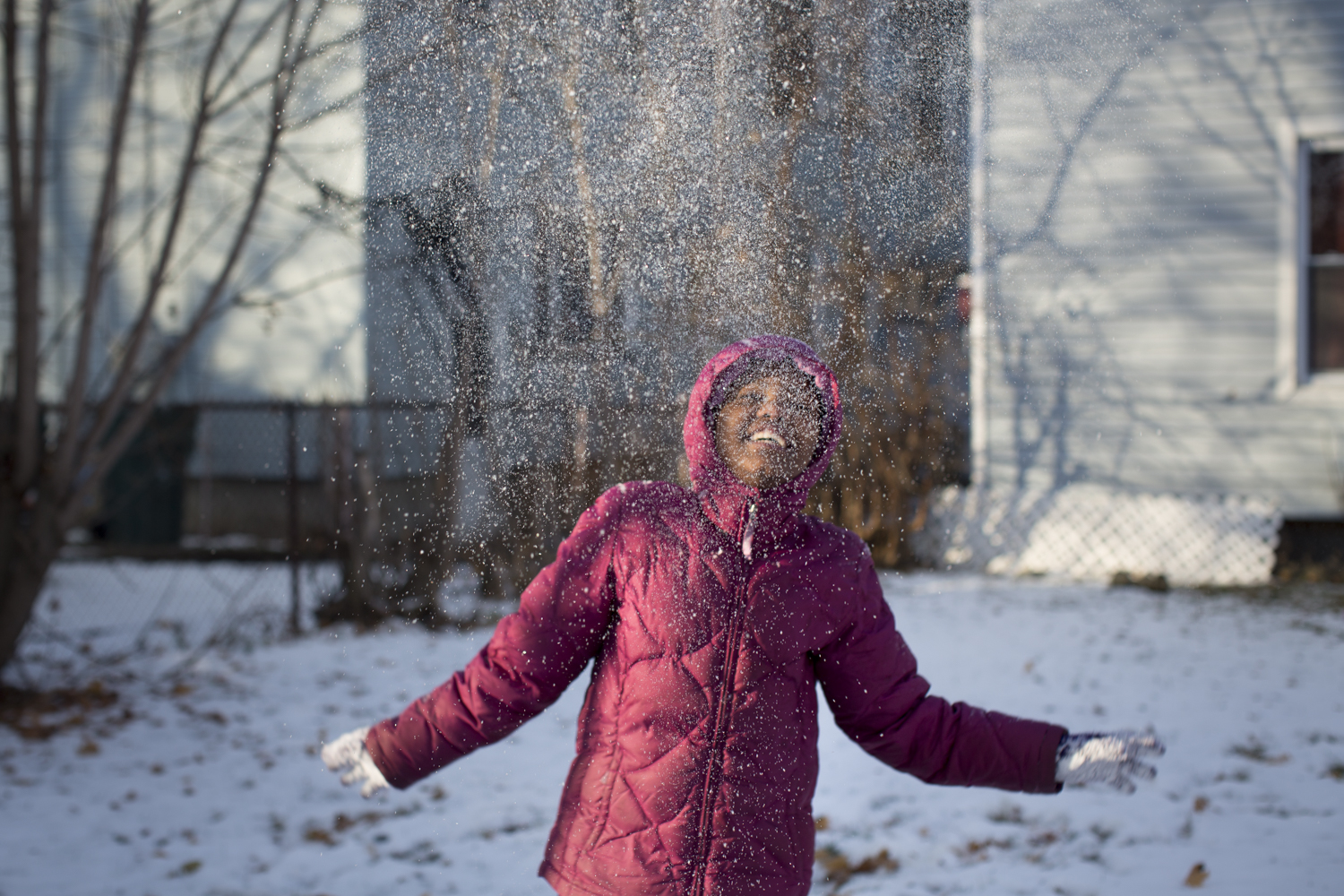
New Roots is the story of the Kamali family’s first year in America after fleeing the Democratic Republic of the Congo. They lived for four years as refugees in Ethiopia before they were finally able to resettle in a permanent new home. They arrived in Rochester, N.Y. on Tuesday, February 4, 2014, exhausted and excited to start a new life in America.
Over the course of the year, each member of the Kamali family adjusted to life in America at their own pace. Nyirazana is a widowed mother of six. When she arrived, she spoke no English and was disabled due to a spinal injury. Her brother, Muhire, stepped in as the patriarch of the family and helped them build a new life. They faced barriers in language, transportation and making a living but they said there was no other place they would rather be.
“When you are starting a new life, everything is difficult. You have to be able to stand for it. If I have been able to stand for my life in insecurity, it is easier to stand for my life when I have stability. In time, everything becomes easier.”
Click on the images below to view larger with captions.
Everything is Good
Sederhana
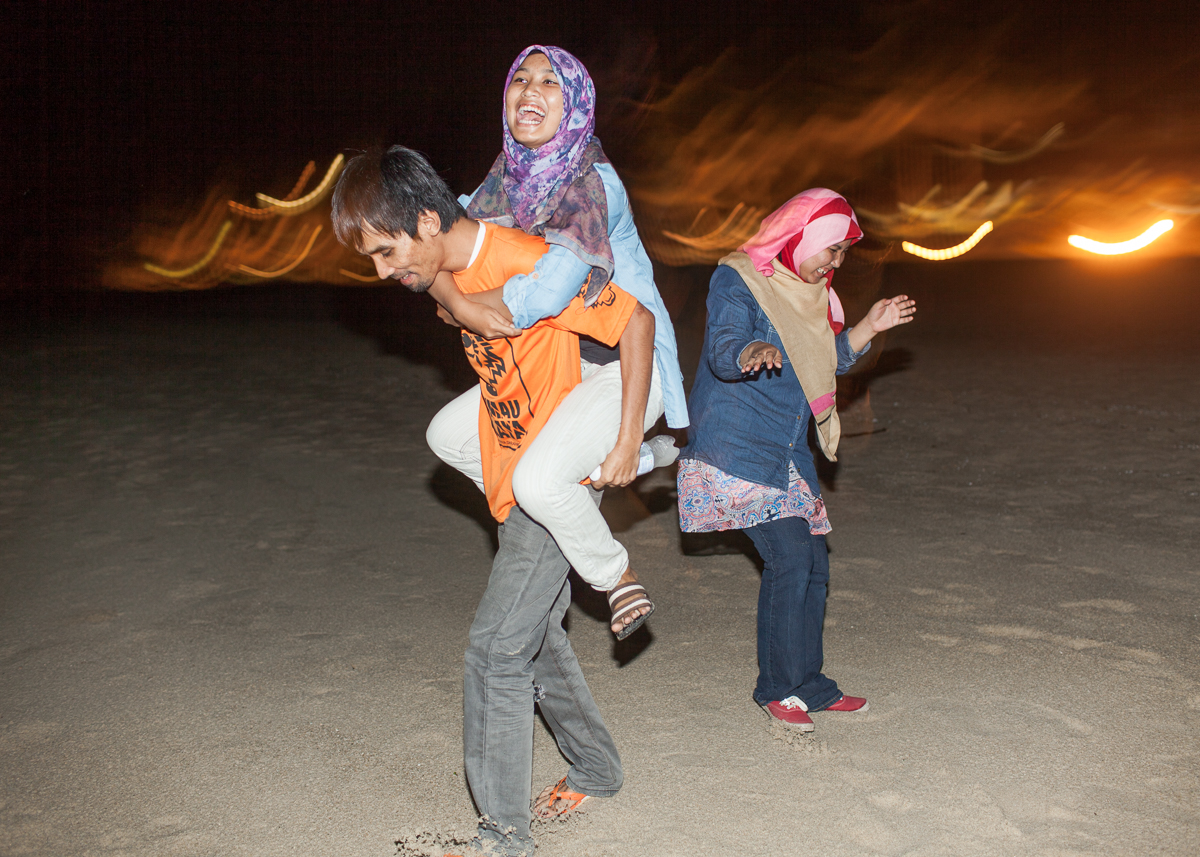
Every year a small group of Malaysian women arrive at the Rochester Institute of Technology on government scholarships from their country to earn degrees in biotechnology. As they pursue their college education on a campus approximately 9,000 miles away from home, the women form tight-knit relationships with each other. This family-like structure helps them deal with the challenges of cultural differences, maintain their studies and remain committed to their Islamic faith.
With this project, Smart created an eBook that incorporates the photographs, videos, and the written story to create a richer viewing experience.
Mylasia
Mylasia Blocker is a typical 12 year old girl. Kind, funny, and genuinely curious, she is unbelievably easy to like. She was born blind, with optic nerve hypoplasia, or underdeveloped optic nerves. She was never supposed to see. Her eyesight began to develop when she was young, and at age four she began to identify her colors.
Her mother describes the day she found out that Mylasia could see as her “favorite day in life.”
A few years later, her vision plateaued and slowly began degrading again. Her doctor predicts that she will be blind again between the ages of 16 and 18.
Today, she can see somewhat, but her eyesight is far from perfect. Technically speaking, it is 20/600 – which means that she can see a standard letter size from 20 feet away,
whereas someone with normal vision could see the same letter from 600 feet away. As Mylasia puts it, she “can’t rely on [her] eyes.”
At the end of the day, her story isn’t about eyesight. It’s about growing up and what it means to fit in.
Roles: Videographer, Editor
Hannah Means Graceful
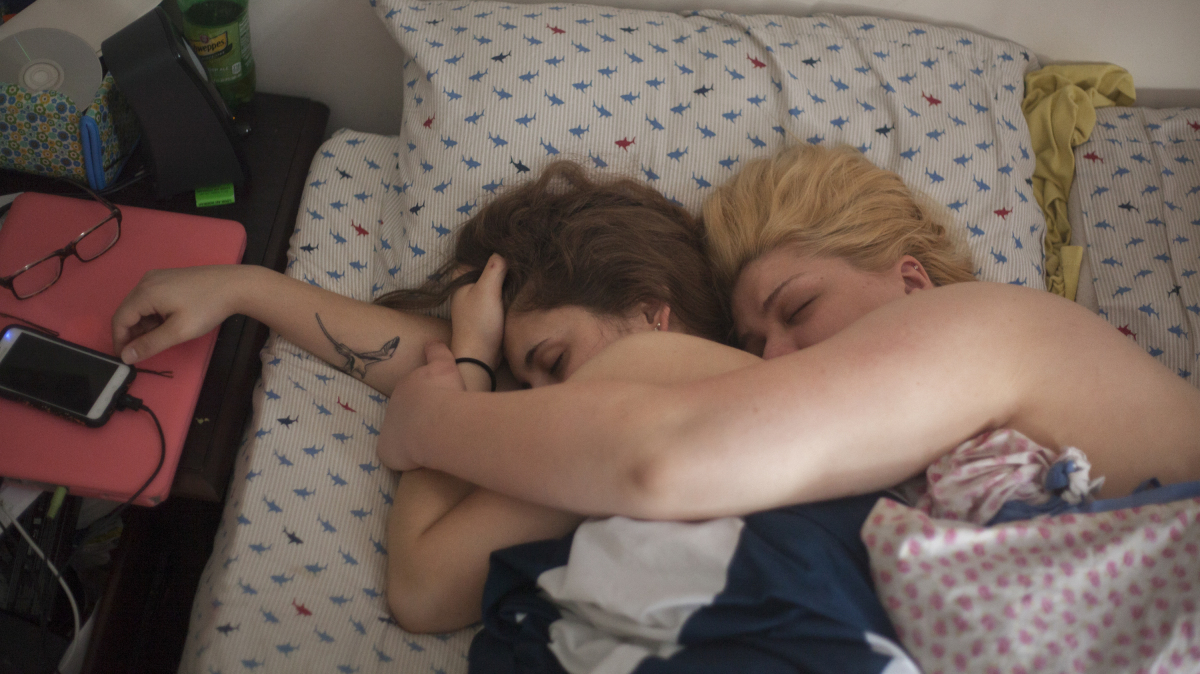
It’s quite common in college to question yourself as you start a new chapter in your life. Sometimes who you want to be and who you are don’t match up, and for Hannah this means a long battle with depression, bulimia, medication and alcohol abuse. In her journey to learn how to care for herself, Hannah has started to develop an understanding of what it means to need someone, and seek love and support.
While there still is a long way for Hannah to be the person she wants to be, her relationship with her first girlfriend Courtney, has helped her find something worth living for.
Roles: Photographer, Videographer, Editor
Bradley
In 2012, the Dorothy Day House opened in Rochester, NY under the “Housing First” philosophy, the idea that people need stable and consistent shelter before other personal issues can be addressed. The program provides transitional housing for homeless individuals who wouldn’t qualify or have been barred from other programs or subsidized housing options. Most residents suffer from severe chemical dependency, mental illness, or both.
One individual at the Dorothy Day House best illustrated the internal turmoil that makes stability seemingly out of reach. Bradley Loce openly admits that his alcoholism has been the source of decades of chronic homelessness, dreams unattained, and estrangement from his family. Continuing in the pattern of familiar pain, Bradley ended up leaving the Dorothy Day House in 2014, and is once again homeless.
I do not see Bradley as an “other.” Bradley is his own worst enemy and I can relate to that. His drinking makes the mirror much kinder. After a short stay in rehab, he hardly recognized his apartment, left trashed as if someone else had done it. The sobriety lasted less than 24 hours, and the lens in which he saw his life was, once again, whatever he wanted it to be.
Throughout the Dorothy Day House there were many connections between each individual’s story and those similarities are themes that I will continue to explore. One commonality was that these men, unlike someone who had fallen on bad circumstance as an adult, were lost as adolescents and never found their way back to the path of stability. Despite good intentions and compassion, the Dorothy Day House was still not able to provide a solution for everybody; that there is no easy fix for chronic homelessness.
Nashvilles
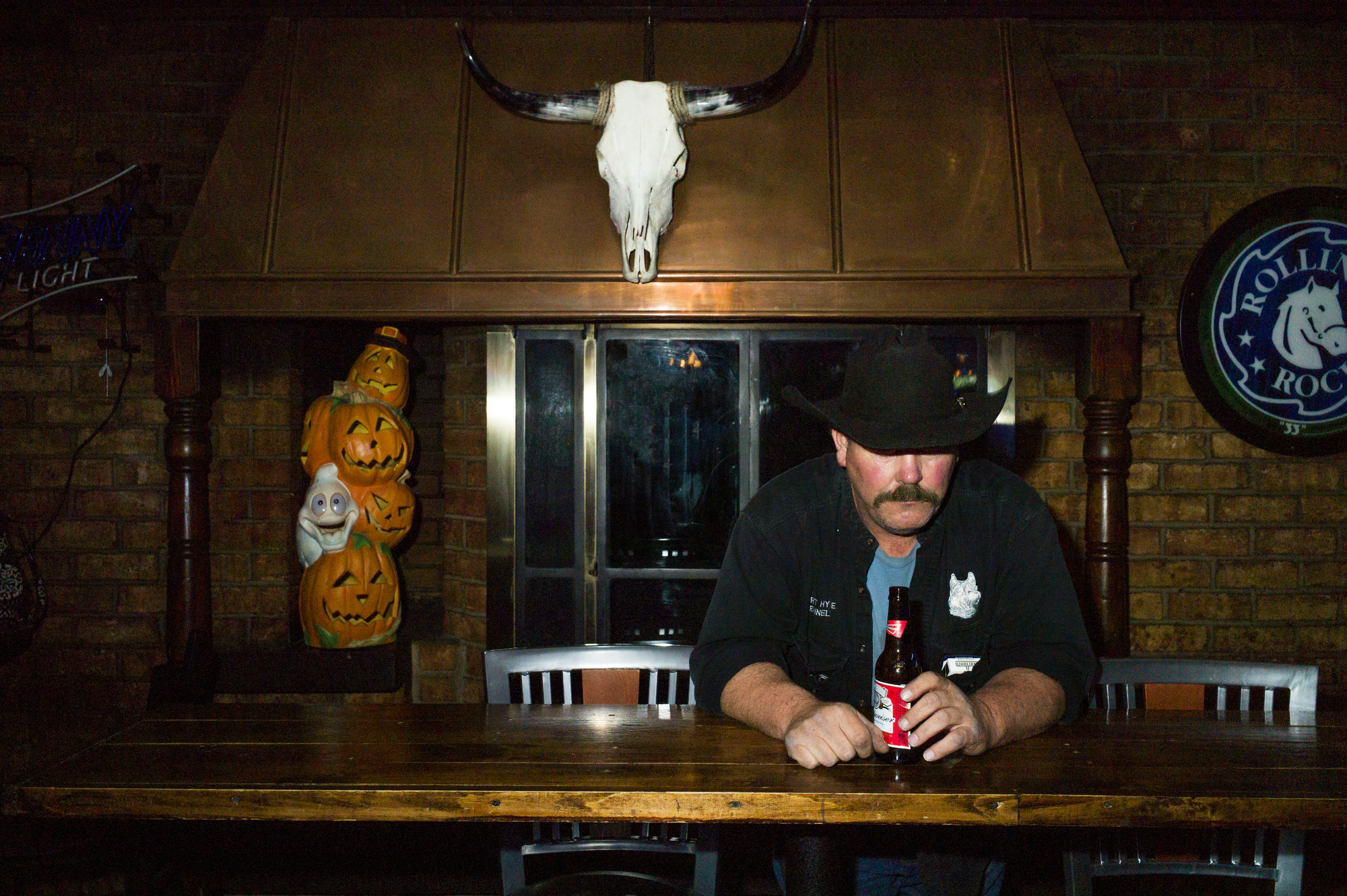
American Country music is traditionally about Southern and Western, rural lifestyles. Simple lyrics, comprehendible virtues and “every-man” stories, along with mainstream artists have popularized this culture in many new regions. Nashvilles, a bar located 15 minutes south of Rochester, NY, is an embodiment of this migration. Cowboy hats and boots abound, patrons line dance to top 40 favorites, while pick-ups sit in the parking lot.
Through big wooden doors with old-fashioned stained glass panels, the smell of stale beer and home cooked food greet you, as well as Jim, Nashvilles bouncer. Jim, a large man, checks ID’s and collects cover charge.
Over speakers sings Luke Bryan, Blake Shelton and old-timers like George Straight. Entering the dining room, booths to the left and a maze of round tables, folks in cowboy boots eat dinner. On the dance floor, beginners and regulars move religiously to the same steps. A DJ is kicking back, taking requests and drinking from a glass boot.
Neon signs illuminate lonely girls upstairs in the balcony overlooking the dance floor. Pool balls break under tungsten lit ceiling fans in a room with wood boarded windows.
At the bar, hotel guests, guys in cowboy hats and college girls wait for drinks. In the corner two guys play darts for the next round of shots, regulars enjoy beers under a wall-mounted longhorn skull.
The Hero Project
Roles: Videographer, Editor
Brittney
An alarm goes off and Brittney stirs. It is 4:30 A.M. and after only a few hours of sleep Brittney is awakening to prepare herself and her son for the cold Rochester air and the almost three hour odyssey they make each morning to the babysitter’s home and then to school. In January 2014, three months after her sixteenth birthday, Brittney learned she was pregnant. More than a year later, now seventeen and with an 8 month old son, Brittney works tirelessly each day to balance school, motherhood, and her complex relationship with her son’s father. Her room is a mix of her childhood and her son’s; cheerleading trophies and stuffed animals line dusty shelves at the far end. Her son has an entire dresser filled with his clothes, diapers, etc. not to mention his crib and various toys and rockers strewn about the room. Photographs, trinkets, and half-empty bottles of sports drinks line every flat surface. On the wall above Brittney’s bed brightly colored vinyl letters spell his name and on her vanity a matted print displays her name in block letters. She has free reign of the basement, which used to be her father’s bedroom. The only part of him that remains is a Tupac Shakur poster hanging on the wall next to her bed, tacks pushed forcefully into the corners by her father many years ago now. Brittney doesn’t even really care for Tupac but the tacks are too difficult to remove.
Brittney is just one of many young women affected by the high rates of teenage pregnancy and birth in Rochester, NY despite a more than 50% decline since the peak year of 1990. Reporting the highest rates of teen pregnancy and birth in the state outside of New York City, Rochester saw 561 children born to teenage mothers in 2010 (the latest year for statistics). Now four years on, those children will fill 25 kindergarten classrooms come fall 2015. Rochester knows many struggles, though. Besides being the fifth poorest city in the United States, Rochester also has the lowest graduation rate in the state at 43%, the highest rate of minor sex trafficking in the state outside of New York City, and an infant mortality rate on par with countries like Jamaica and Albania.
Only 38% of girls who have a child before the age of 18 earn a high school diploma nationally. High school dropouts tend to rely more on public assistance, are more likely to be incarcerated, and will, on average, earn $260,000 less over their lifetimes than their graduated counterparts. The children of teen parents are more likely to experience abuse as a child, drop out of high school, be incarcerated, and become teen parents themselves. However as funding dwindles for programs that aid teen parents in navigating the social service system and the incredible responsibility of parenthood, something parents of all ages struggle with, the future of many of Rochester’s children remains uncertain.
With her son as her driving motivation, Brittney is setting out realistic goals for herself; the most important of which is to graduate from high school.
Roles: Photographer, Videographer, Editor, Writer
Laine
Roles: Videographer, Editor
Furat the Barber
Roles: Videographer, Photographer Editor
Through Chance By Choice
“I haven’t had a blood family, but I’ve been able to create a family. This is true most of my life at various times, whether it’s been a formal family or not,” said Bonny.
The concept of the traditional family, as defined by the Work and Family Researchers Network, is the natural reproductive unit of a mom, a dad, and children all living under one roof. Traditional families are being phased out in favor of more unconventional relationships.
Bonny Mayer saw a flier for a family portrait and decided that this was as good a time as any to formally invite her close friends to be apart of her family. After thinking back to which ones had been the most instrumental in her life, a list of 18 people was drawn up. Everyone felt honored to be considered her family, and they all met one Sunday to take a family portrait. It has been four years since that picture was taken and a few others have joined the family. This video gives insight on what it’s like to be apart of Bonny’s family.
Roles: Videographer, Editor
Maplewood
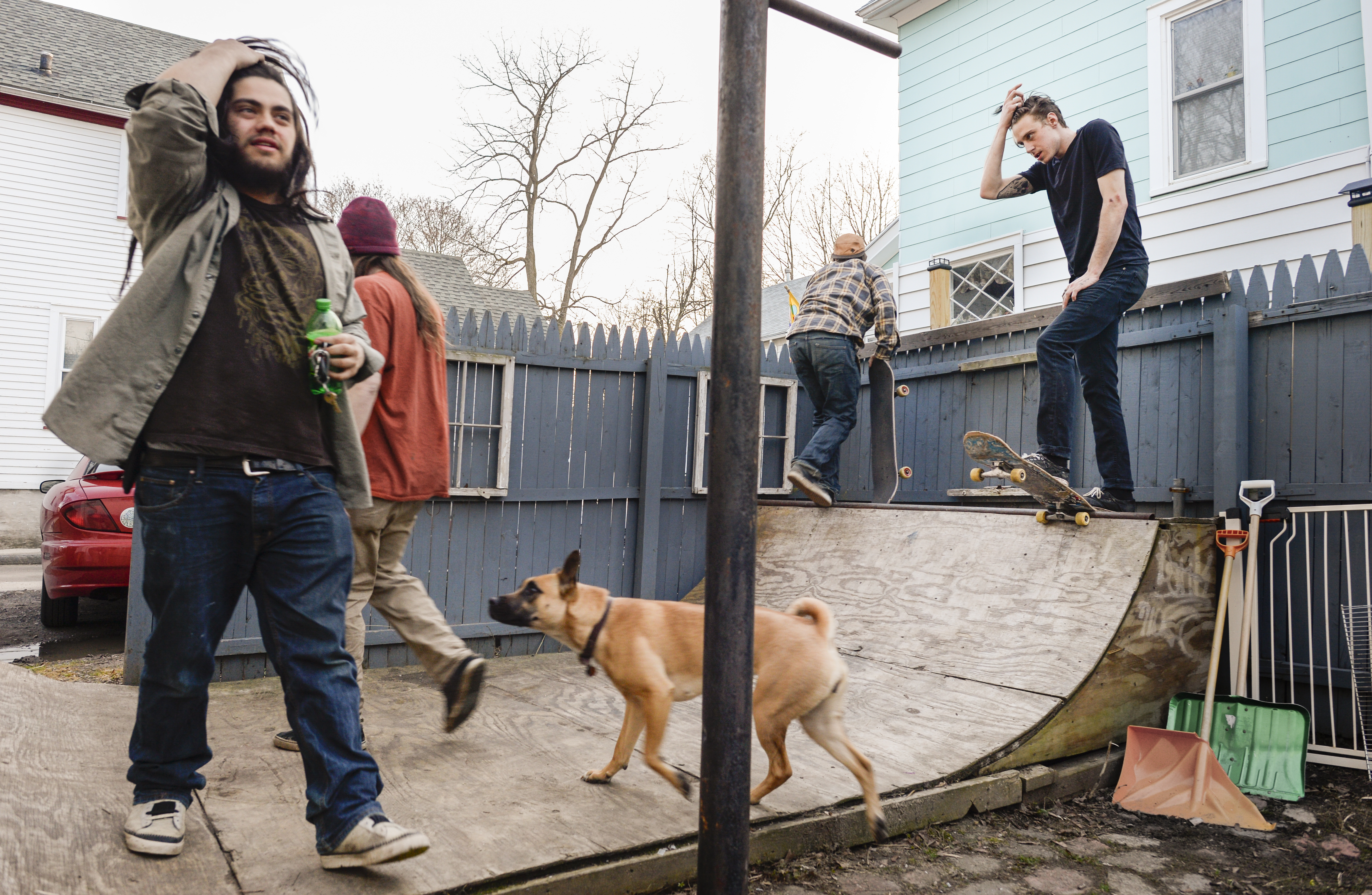
I remember when I first started skating I didn’t much care for the nuances involved with the production of a quality skateboard. As long as it didn’t break under my feet, it didn’t really matter. But after a few years I started hanging around the local skate shop more and more, and it was there I learned that sturdy quality skateboard decks are made from hard rock maple, anything else just doesn’t compare. I found myself paying attention to the little details in every skateboard deck; I wanted to know where it was made, the feel of its concave, the shape of its nose and tail, and of course, the wood that made up its veneers. I found that, though they seem miniscule, all of these things really make a difference in how skateboarding feels. But as I spent more time with these little details another question arose on its heels; if these are the aspects that make a skateboard, then what are the aspects that make a skateboarder? That’s the question I’ve sought to answer in this project; this is my effort to find the bits of Maplewood scattered throughout my own skateboarding community in Rochester New York.
With the work, I’ve designed and printed a zine that delves deeper into the aspects of the culture. The zine is on display at the First Comes Trust exhibition and available for purchase.
Click on the images below to view larger and with captions.
Share the Stories
